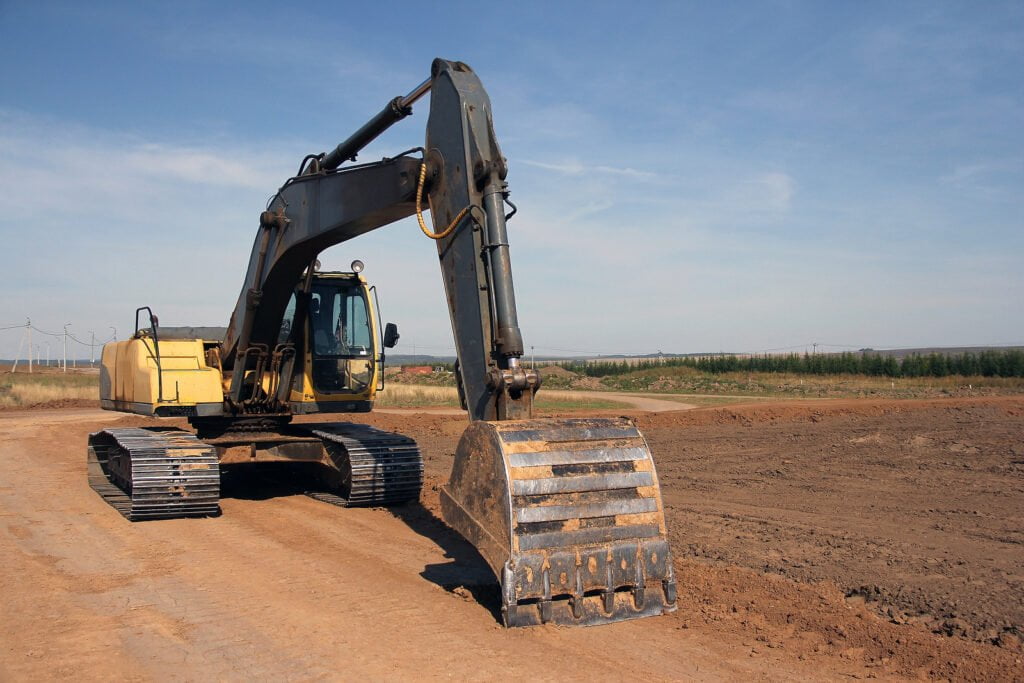Excavators are indispensable tools in construction, mining, and various earthmoving projects. These powerful machines come in different forms, primarily distinguished by their mobility configurations: tracked and wheeled. Understanding the differences between tracked excavators and wheeled excavators is crucial for choosing the right equipment for your project needs. This blog post explores the key distinctions, focusing on aspects such as mobility, stability, and application environments, with special attention to large tracked excavators.
Mobility and Terrain Adaptability
One of the fundamental differences between tracked and wheeled excavators lies in their mobility and terrain adaptability.
Tracked Excavators
Tracked excavators, especially large tracked excavators, are equipped with continuous track systems. This design provides superior traction and stability, allowing them to navigate challenging terrains like mud, snow, and uneven surfaces. Large tracked excavators are particularly effective in demanding environments requiring precise movements and heavy lifting.
Wheeled Excavators
Wheeled excavators, on the other hand, are mounted on rubber tires. They offer the advantage of faster movement speeds on hard surfaces like concrete and asphalt, making them ideal for urban construction projects and tasks that require frequent repositioning across job sites. However, they may struggle with traction and stability on soft or uneven terrains compared to their tracked counterparts.
Stability and Lifting Capacity
An excavator’s stability and lifting capacity is crucial for safe and efficient operation, particularly when handling heavy loads.
Enhanced Stability of Large Tracked Excavators
Large tracked excavators boast a wide footprint, distributing their weight more evenly across a larger surface area. This design minimizes ground pressure and enhances stability, allowing for more substantial lifting capacities without the risk of tipping. The stability of large tracked excavators makes them suitable for tasks that involve deep excavation, heavy lifting, and operations in challenging terrains.
Mobility Versus Stability Trade-off
While wheeled excavators offer greater mobility and ease of transportation between sites, this comes at the expense of reduced stability on soft or rugged terrains. Their lifting capacity is generally adequate for many urban and roadside projects, but for heavy-duty tasks in challenging environments, large tracked excavators are often the preferred choice.
Application Environments
The choice between a tracked and wheeled excavator often depends on the specific requirements and constraints of the project environment.
Versatility of Large Tracked Excavators
Large tracked excavators are versatile machines capable of working effectively in a wide range of environments, from construction sites and quarries to forestry and mining operations. Their ability to navigate difficult terrains and perform in various conditions makes them a go-to option for projects that demand high levels of power, stability, and durability.
Urban and Roadside Projects
Wheeled excavators are particularly valued in urban settings and for projects that involve working on or near roads. Their ability to quickly move between sites without the need for additional transportation equipment, along with their reduced impact on paved surfaces, makes them an efficient choice for municipal and utility work, landscaping, and light construction tasks.
Conclusion
The choice between a tracked and wheeled excavator depends on several factors, including the project’s terrain, the nature of the tasks, and the need for mobility versus stability. Large tracked excavators offer unparalleled stability and lifting capacity, making them suitable for heavy-duty tasks and challenging environments. Wheeled excavators, with their superior mobility and speed, are ideal for urban construction projects and tasks requiring frequent site transitions. Understanding these differences will help you select the right excavator type for your specific project needs, ensuring efficiency, safety, and optimal performance.

